Removing mould
Removing mould from surfaces is vital before any decorating may be carried out. Commonly, you find mould growing in bathrooms where poor ventilation has allowed condensation to occur on wall surfaces – an ideal condition for mould growth. The easiest way of removing mould is to used a mould killer which is simply applied to the area in order to kill off any growth.
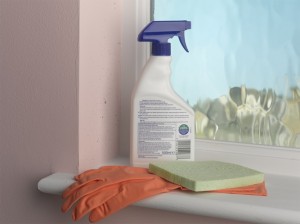 |
1. Mould killers contain fungicides, so make sure you wear the recommended protective equipment during use. |
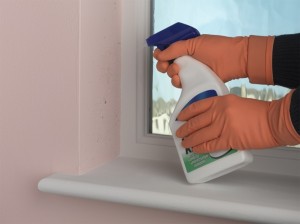 |
2. A spray-on mould killer is used here. Apply the product liberally to the affected area, as directed. More than one application may be required. |
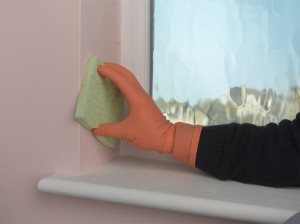 |
3. Leave on the affected area as long as directed by the manufacturer before thoroughly wiping down. |
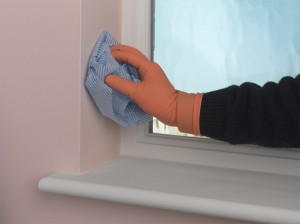 |
4. With clean water, once again wipe down the area to clean off any further residue. Leave to dry completely before painting. |
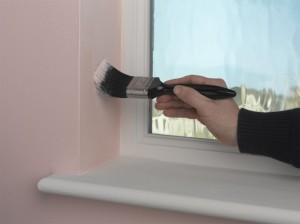 |
5. Apply two coats of your chosen finishing paint to the affected area, allowing adequate drying time between coats. |
Dealing with mould
- Make sure that the mould growth is not a result of structural damp problems. More information on damp is discussed in the guide – ‘Sealing damp stains’.
- Make sure that you have extractor fans in kitchens and bathrooms as this will help deal with any condensation problems.
- Condensation can be greatly reduced by devices such as dehumidifiers.
- Moisture controllers can help to deal with condensation problems.
- Opening a window is often all that is required to reduce condensation problems in a room.
- Make sure you use the trickle vents if you have them on your windows. These are the small vents found along the top edge of the frame on more modern windows. These allow a circulation of fresh air even when the window is closed.
- For much more information on this subject, see my guide – ‘Condensation and mould’.
